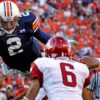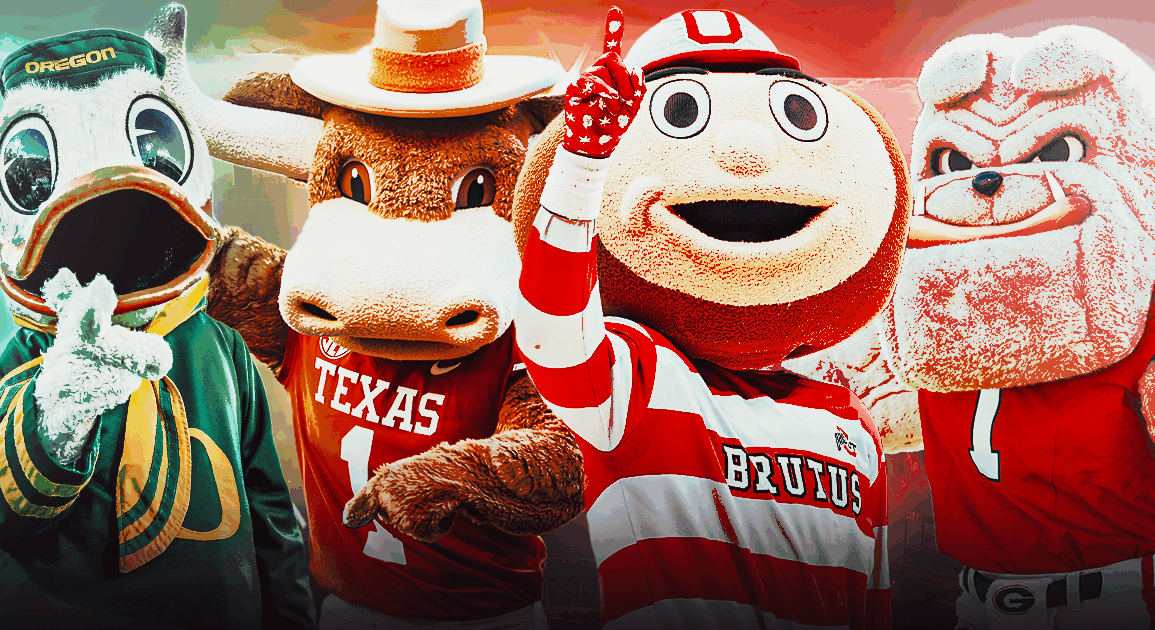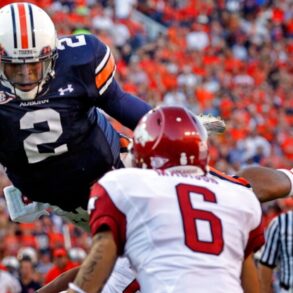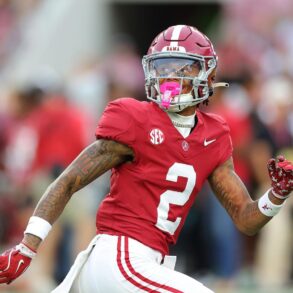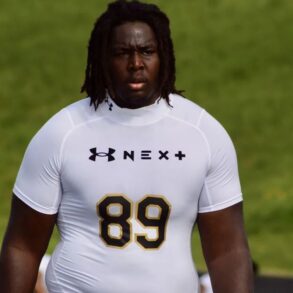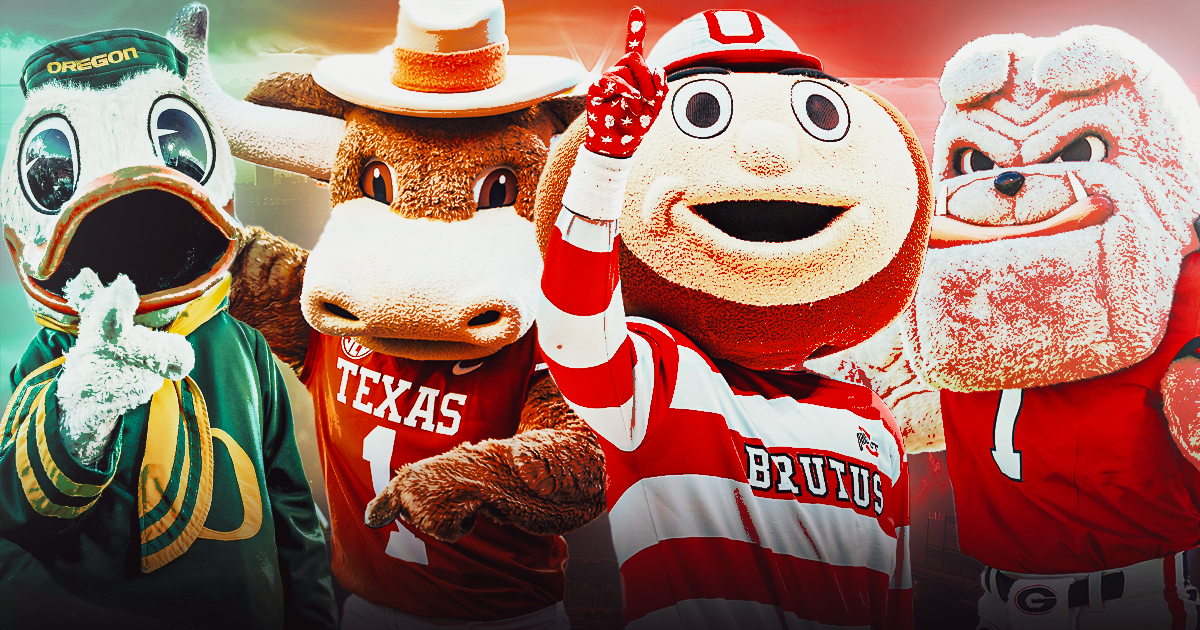
The hardest part about making a list of the best college football jobs is the inclination — consciously or unconsciously — to list the best coaches. Alabama probably wasn’t the best job in college football at any point this century, but it sometimes seemed like it because the Crimson Tide had the best coach in Nick Saban.
We’ll try to divorce job from coach here, but understand that our lists (and the one you’re making in your head right now) are highly subjective. There is no mathematical formula.
What makes a great job?
- Total support from the school in terms of resources and alignment between the athletic department and the president’s office.
- A passionate (and preferably wealthy) fan/donor base.
- A history of success plus a repeatable model of recent success.
- Proximity to excellent recruits.
Neither of us has made one of these lists in the NIL era, so the major addition is this: The school needs to be on board with paying top dollar for talent. This doesn’t mean that the program needs an unlimited player compensation fund. But it needs to be competitive with the other schools striving for the top of the sport.
Some other factors play a role as well. For instance, one of us (Ari) has a job on this list that the other (Andy) doesn’t have on his list because he believes the program might just be cursed. We have to take everything into account.
1. Georgia: The re-commitment of top-ranked class of 2026 quarterback Jared Curtis — whose other finalist was Oregon — this week was a signal that Georgia is committed to playing the player compensation game at the highest level. This wasn’t always the case, and it’s why I considered moving the job down the list; it has topped (at least in my mind) since the mid-2010s when I was tipped off that Nick Saban considered Georgia the best job in college football.
The Bulldogs had everything else: historical success, recent success, high-resource athletic department, great conference, incredible location. But the question early in the NIL era was how much Georgia would rely on getting a discount because it has proven to be so good at putting players in the NFL with high draft picks. That factor is worthy of a discount, but as programs such as Georgia and Ohio State learned the hard way early in the NIL era, it’s probably not as big a discount as they originally believed.
2. Ohio State: The Buckeyes proved last offseason that they intend to keep Ohio State atop this list for the foreseeable future, but not necessarily in the way you might be thinking. It wasn’t spending on Caleb Downs, Quinshon Judkins and Will Howard that won the Buckeyes the national title, though that certainly helped. It was spending to bring back Buckeyes such as Jack Sawyer, Tyleik Williams, J.T. Tuimoloau and Donovan Jackson. All of those could have been productive NFL players in 2024, but they chose to return for one more ride.
Last year’s spree was a relatively new development, though. Programs like Texas, Oregon and Tennessee had shown they could shear off players who would have gone to the superteam-era powers. Ohio State needed to get on their level from an NIL standpoint, and now it is.
3. Texas: I was way down on Texas as a job at the end of the 2010s because I feared it fell into the bucket with USC and Florida, which you won’t see in this top 10. Those jobs can be great when occupied by a Hall of Fame-level coach, but others seem to struggle in them. A major part of the problem was that, dating back to the end of the Mack Brown era, Texas seemed dysfunctional as a top-to-bottom organization.
The hiring of Chris Del Conte as the athletic director in 2017 seems to have cured that. Now, it feels as if everyone at Texas is pulling in the same direction. Del Conte and Longhorns donors were aggressive early in the NIL era, and now coach Steve Sarkisian knows that he’ll have the resources to get what he needs to stock his roster. Sarkisian, meanwhile, has provided excellent evaluation and development to ensure those dollars are spent effectively.
Ari Wasserman has this job at No. 1 on his list. I don’t have it far behind Georgia and Ohio State — which feel relatively even — but I’d like to see the Longhorns break through and win a national title. But it may be that the Longhorns do that soon and prove that I’m too stuck in the past and that Ari nailed the future.
4. Oregon: Oregon’s willingness to spend on players has vaulted the job up these rankings. Before the NIL era, geography probably would have created a lower ceiling for the program. Now? The Ducks can get in on any player they want, whether he’s a blue-chip high school recruit or a high-profile transfer. They don’t get all of them, but they’re almost always in the mix. That’s how you build a national championship roster.
5. LSU: I would not have had LSU this high a year ago when Brian Kelly was saying, “We don’t buy players” when he meant, “These particular spring portal defensive tackles are not worth what they’re asking.” LSU had everything else a program needs to be on this list, but it was unclear how willing the Tigers would be willing to spend to upgrade a roster that needed upgrading. LSU had everything else. You don’t win three national titles in 16 years with three different head coaches without a quality infrastructure. But that piece needed to be addressed.
Between this offseason’s portal class and the way LSU is assembling its high school class of 2026, the Tigers clearly have gotten everyone on board. Maybe it took losing quarterback Bryce Underwood to Michigan to light the fire. But it’s blazing now.
6. Notre Dame: This is a case where the flattening at the top of the sport has made a job better. In the superteam era, it would have been difficult to build a deep enough roster at Notre Dame to compete with the Alabamas and Ohio States. Notre Dame fishes from a smaller pool of academically qualified recruits, and while there has been a shift in recent years, an athlete who chooses Notre Dame still has to want a more traditional college experience as opposed to a football-factory lifestyle.
But with talent spreading out more thanks to the Invisible Hand — a concept plenty of Notre Dame players probably studied in recent semesters — coach Marcus Freeman has been able to stock the roster to a point that the Fighting Irish can once again be a perennial national title contender. That is, of course, if the program is willing to spend on talent. And it is clear so far in the NIL era that Notre Dame is quite serious about that.
7. Alabama: Why does former Crimson Tide coach Saban keep advocating for NIL rules that would turn back the clock 10 years? Because he knows this current environment doesn’t help Alabama nearly as much as the old one did.
The Crimson Tide still have what they need to contend for national titles. They’ve got good resources, the right conference, excellent geography relative to talent and one of the most passionate fan/donor bases in America. But Saban understands that no matter how deeply the people care, there won’t be more millionaires in Alabama than there will be in Texas. So in an uncapped compensation market, Alabama won’t be able to spend the most.
But that only makes the job slightly more difficult. Because Alabama can still spend a lot, and as long as the person coaching the Tide can evaluate and develop, Alabama can compete with anyone.
8. Michigan: After Ohio State clobbered Michigan once again in 2019, I wrote a column wondering why Michigan didn’t seem to care as much about winning at football as Ohio State. It made little sense that a program with so many advantages could feel so far behind what should be a peer.
One program overhaul later, we’ve seen what a fully operational, fully engaged Michigan looks like. And the late push to grab Underwood — a highly touted local player at the position the Wolverines needed most — shows what happens when the “money cannon” the posters at MGoBlog always joked about starts getting fired for real.
9. Clemson: The changing structure of the sport may wind up making Clemson an even better job — at least temporarily. If the ACC winds up getting two automatic bids into the College Football Playoff for 2026 and beyond, that means the Tigers only have to be the second-best team in the ACC to get into the bracket every year. Given Clemson’s superior recruiting to most of the league, that’s a fairly light lift.
Will Clemson be in the ACC for the entirety of the next CFP deal? Who knows? But the theoretical next stop would put Clemson on more even financial footing with the schools on this list, so that’s probably a plus.
10. Penn State: As with Texas, an athletic director hire changed where a program falls on this list. Pat Kraft’s arrival in 2022 from Boston College was the moment Penn State the university started taking football as seriously as its coaches and fans wanted.
That may mean I have the Nittany Lions too low on this list, but the competition is stiff. We need to see whether Penn State can consistently compete for national titles first.
1. Texas: It’s mind-boggling how Texas had a decade-plus period of being down while in the Big 12, but this has always been one of the premier jobs in college football. But now, in the midst of the NIL era where the Longhorns spend big bucks, Texas has remerged as the premier coaching destination in the country. It’s in a cool city, it exists in one of the three most talent-dense states in the country for high school talent, has a storied football tradition and now it’s dominant in the realm of talent accumulation.
As it pertains to places with a national title ceiling, there is no better place to coach than Texas. The best part? Del Conte, as Andy pointed out, has smoothed over the dysfunction in the program and things are running smoothly. It’s only a matter of time before Texas wins its next national title and it could come as soon as 2025.
2. Georgia: So much of these rankings is about history of past success and program stature and Georgia has both. On top of that, it has won two of the last four national championships and it holds the unique advantage for being the only big-time program in a talent-rich state. It’s an hour away from Atlanta, so the Bulldogs can win at home and on the national stage in recruiting.
On top of that, Georgia’s NIL has improved in the past year, so its coach can sell what makes the Bulldogs elite — NFL Draft picks, CFP appearances, deep and talented roster, tough practices, etc. — while also paying premier talents to come. The path from building to winning is the shortest distance at Georgia.
3. Ohio State: Having spent a decade of my life on the Ohio State beat, I’ve had an inside view of what makes the Buckeyes tick. And let me say, there is a reason Ohio State is the only major program in college football that hasn’t had a prolonged down era. Ohio State is king in Ohio and universally viewed as the premier program in the North and it’s basically recession-proof. Why? Because the brand transcends geography and the consistency is unmatched.
Ohio State has — and invests — the resources to be elite across the board in everything, from recruiting budget to waterfalls in the locker room. It accumulates talent at a high level, both in-state and nationally, and everything it does is predicated on never being mediocre. Coaches get paid a boatload of money, but in exchange, being anything but the best is unacceptable.
4. Oregon: Oregon would have been lower on this list had this ranking come out five years ago, but the Ducks have proven time and time again that geographical footprint has never meant less. Oregon is one of the leaders of NIL and has a recruiting-hungry coach, which has resulted in a tremendous upgrade in baseline roster talent since Dan Lanning started. Like Texas, it seems like Oregon is going to win it all in the next 10 years at some point. It feels like an inevitability.
5. Texas A&M: I know this is out of left field and people are going to freak out, but hear me out. Texas A&M plays in the SEC, is flush with cash, plays in an iconic stadium and has proven repeatedly over the course of the last decade it can recruit at the highest possible level. Add in the fact the coach gets compensated like crazy and the standard isn’t as high as Alabama or Georgia, this is a pretty sweet landing spot. And if you win a national title, Texas A&M builds a statue of you. It’s a premier job regardless of how much the team has underachieved in the past, so keep your “Texas A&M has never won anything” comments to yourself. This is about the future, not the past.
6. LSU: LSU could be No. 1 on this list and I wouldn’t argue. There is a reason the previous three head coaches have all won national titles. It owns the state of Louisiana and it’s an iconic college program. The best part? The blueprint to winning is a pretty straight line — keep the best players in Louisiana home and supplement holes in classes with premier national talent. LSU proved this offseason, too, that it’s completely in on NIL and it could be on the verge of another special season.
7. Alabama: Alabama was the hardest team to rank on this team. There is no question it is one of the most iconic programs in college football with a history as deep and rich as anyone else. But how much is the Nick Saban era clouding our brains when it comes to how coveted the job should be moving into the future? It’s top-10, no question, but Saban’s success isn’t an indicator for future success, especially in an era where NIL is king and Alabama doesn’t have as many millionaires as other states. As Andy pointed out, Saban keeps advocating for NIL rules to turn the clock back 10 years. He’s telling you the challenges Alabama faces, which keeps it out of the top 5.
8. Michigan: In the 10 years I covered Ohio State, Michigan only beat the Buckeyes one time. And that occurred during the 2012 season when Ohio State was decimated by suspensions after the dumb Tat-Gate scandal. For a while there, it felt like the rivalry was dead. But in the last few seasons, you’ve seen a commitment to football at Michigan the program lacked for much of the previous decade. In landing Bryce Underwood, Michigan proved it was ready to play the NIL game. Michigan is a blue blood committed to winning in football now. Enough said.
9. Notre Dame: Notre Dame would have been lower on this list in year’s past, but the Irish just proved last season that it can burst through the previous perceived ceiling. Though Notre Dame ultimately fell short in the national title game, the legendary program showed the world it could build a roster good enough to win postseason games. There is no question the culture of being a Notre Dame student is unique and not for everyone, but Notre Dame will pay NIL and cultivate an environment in the new world of college football that could produce a winner.
10. Oklahoma: Like Ohio State, Oklahoma has avoided prolonged periods of being down. And while it’s easy to get caught up in the moment — the Sooners, after all, aren’t very hot right now — it’s important not to forget who they have always been. Oklahoma has an advantageous recruiting territory (is basically a Texas program) and has an administration that’s committed to winning. Things are more difficult now that Oklahoma is in the SEC, but this is — and will remain — a premier job in college football.
This post was originally published on this site be sure to check out more of their content.


